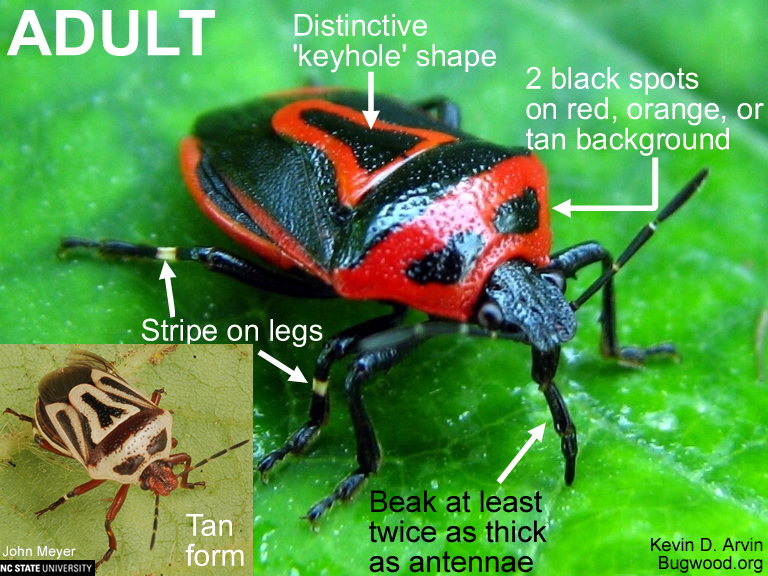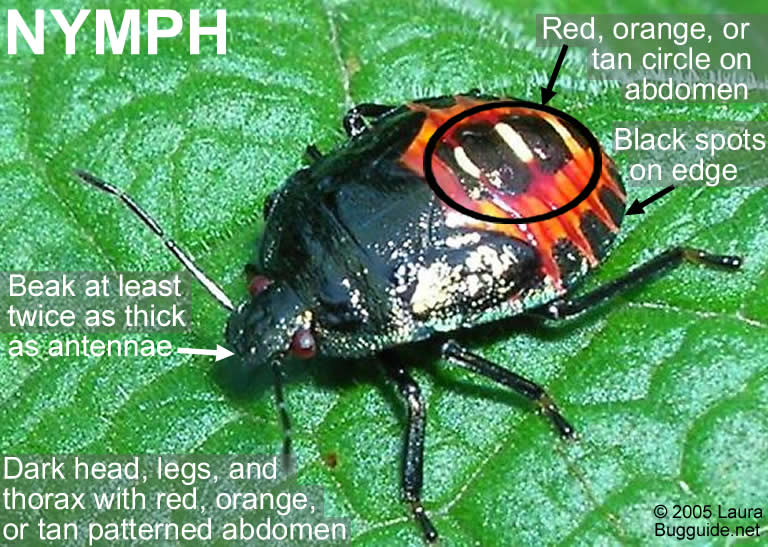Two-Spotted Stink Bug
go.ncsu.edu/readext?562945
en Español / em Português
El inglés es el idioma de control de esta página. En la medida en que haya algún conflicto entre la traducción al inglés y la traducción, el inglés prevalece.
Al hacer clic en el enlace de traducción se activa un servicio de traducción gratuito para convertir la página al español. Al igual que con cualquier traducción por Internet, la conversión no es sensible al contexto y puede que no traduzca el texto en su significado original. NC State Extension no garantiza la exactitud del texto traducido. Por favor, tenga en cuenta que algunas aplicaciones y/o servicios pueden no funcionar como se espera cuando se traducen.
Português
Inglês é o idioma de controle desta página. Na medida que haja algum conflito entre o texto original em Inglês e a tradução, o Inglês prevalece.
Ao clicar no link de tradução, um serviço gratuito de tradução será ativado para converter a página para o Português. Como em qualquer tradução pela internet, a conversão não é sensivel ao contexto e pode não ocorrer a tradução para o significado orginal. O serviço de Extensão da Carolina do Norte (NC State Extension) não garante a exatidão do texto traduzido. Por favor, observe que algumas funções ou serviços podem não funcionar como esperado após a tradução.
English
English is the controlling language of this page. To the extent there is any conflict between the English text and the translation, English controls.
Clicking on the translation link activates a free translation service to convert the page to Spanish. As with any Internet translation, the conversion is not context-sensitive and may not translate the text to its original meaning. NC State Extension does not guarantee the accuracy of the translated text. Please note that some applications and/or services may not function as expected when translated.
Collapse ▲- Common Name: Twospotted Stink Bug
- General Category: Beneficial Predator
- Taxonomic Classification: Hemiptera: Pentatomidae
- Scientific Name: Perillus bioculatus
Description
The two spots and distinctive keyhole markings in adults make this predatory bug easily distinguished from other predatory stink bugs, It also is a generalist predator, meaning it’s not a picky eater. Like all true bugs (Hemiptera) these predators have a beak. To feed, they swing their beaks up from under their bodies, sneak up to their prey and jab them with the harpoon-like tips. They inject digestive enzymes through the beak that soon render the prey immobile, after which they suck up the digested insides.


Identification
Review the images for tips on how to identify these predators.
Adults
Adults have two distinctive spots on the top of their thoraxes, as well as a keyhole-shaped marking on their backs. Head and legs are black, with a stripe on the latter. Colors of thorax and abdomen are variable, with black markings on either red, orange or tan background; ‘shoulders’ are rounded in contrast to the spines seen in other predatory stink bugs. Like all predatory stink bugs, Twospotted stink bugs have beaks that are at least twice as thick as their antennae (see a comparison).
Nymphs
No wings. Beaks like adults. The overall shape is rounded with a somewhat flattened underside. Black or brown head, thorax, and legs. Abdomen with red, orange or tan O shape, and black spots around edge.
Value in Pest Management
These stink bugs are less common natural control agents of a variety of plant-feeding insects. They may contribute to pest population regulation if abundant, but not as much as Podisus (see example study). They are not sold commercially.
Origin and Distribution
Native, throughout North America.
Discover Life – Perillus bioculatus


